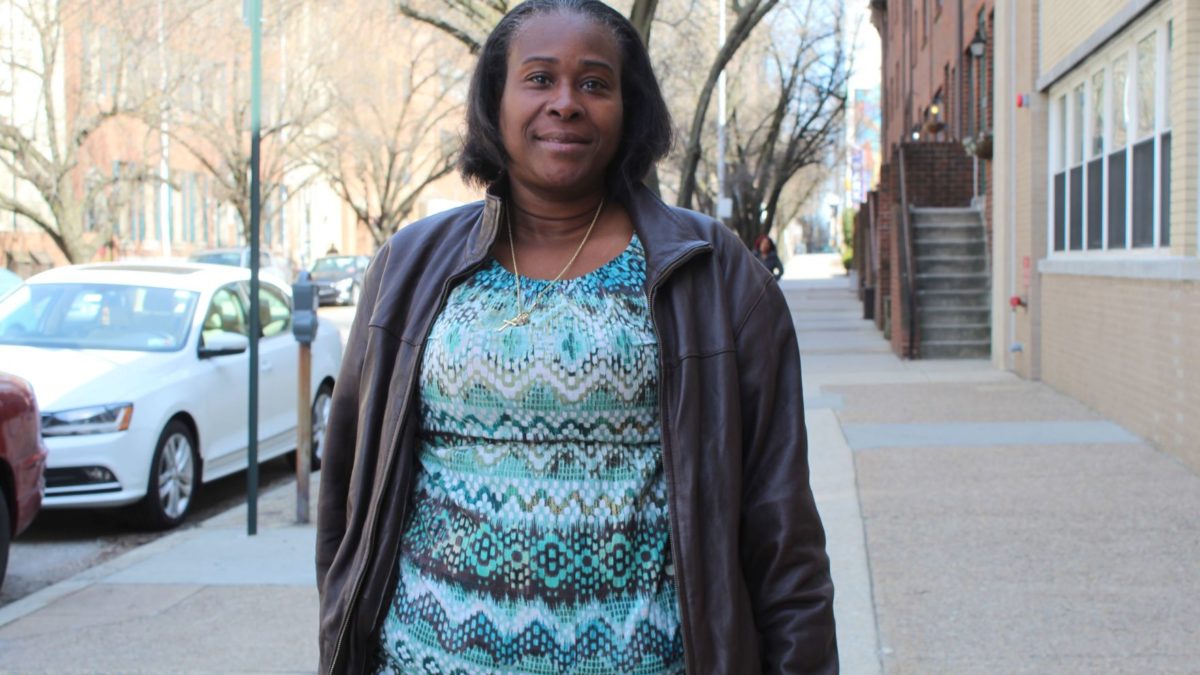The March 28 move-out date came and went for the women of Fernwood East, a temporary emergency shelter during the winter months.
In early March, Philadelphia Weekly spoke with nine of the women outside Councilwoman Janine Blackwell’s office, where they tried to make Fernwood East a year-round women’s shelter or, at the very least, gain an extension. The temporary shelter is a part of Fernwood RHD, which also includes a permanent men’s shelter in the west wing.
The women even reached out to famous celebrities for help, like Philly natives Will Smith, Kevin Hart, and Meek Mill as well as philanthropic personalities, such as Ellen Degeneres, Queen Latifah, and Oprah Winfrey.
Ultimately, the women’s pleas went unreturned.
“We are leaving, going places. We don’t know if something else is going to happen at that next shelter,” said Tanya Curry, 46, one of the women who was at Councilwoman Blackwell’s office. “That’s how I’ve been out on the street for over a year, because something happens here, something happens there.”
According to Fernwood RHD Director Michele Rector, of the 42 women who stayed at Fernwood East, 10 have secured Permanent Supportive Housing (PSH) that they have either moved into or are in the transition of moving into. With the exception of four women with severe disabilities who will stay at Fernwood East for another two weeks while appropriate housing is found, the rest of the women have been scattered around other city shelters. The planned exodus leaves roughly 60 beds that will remain unused until next winter.
“Well, first of all, I don’t understand how women are still taking back seats. Women that are homeless have children, they have a family, they have grandchildren and you put them out on the street?” said Val Bell, a case manager in support of the women. “Then you get a bed, stay for three months and then [they] move you somewhere like [you are] cattle, just place them anywhere like [you] are animals.”
Bell added that she had trouble placing some of the women, because shelters and other arrangements were simply too full and under-resourced to take them in.
According to Josh Kruger, the Office of Homeless Services’ communications director, the City temporarily adds 300 beds to the overall year-round emergency shelter capacity of 2,600 beds. Considered almost as a necessary evil, many shelters also incorporate chairs for sleeping arrangements to handle the overflow. Fernwood East is not one of those shelters.
A day before the deadline, Curry and Cindy Lou Dennis, 54, met with Columbus Property Management’s Mission First Housing Group at 2042 Arch St. to discuss housing alternatives. Ultimately, the two women were offered a shared housing option. After the meeting, Curry and Dennis said all they knew was that they would live together with a third unknown person in a house located in the Frankford area.
“We haven’t gotten to seen the place yet or anything so we don’t know how [close knit] we are going to be,” said Curry, who suffers from multiple autoimmune diseases that makes moving around to different emergency shelters a challenge. “We can change our mind from now until the time to go see it and move in.”
Curry explained that “the good part” of the deal is that the housing option would cost 30 percent of their income. The concession, according to Curry, is that they would be taken off the PSH waiting list and could conceivably live with two random people for the “rest of [their] lives.”
“Well hopefully something might come through before the shared housing, but if not, I’ll take the shared housing,” said Dennis, Curry’s soon-to-be housemate.
Dennis said she has been on dialysis for 19 years, which she attributes to being “sickly as a child.” Homeless since December, Dennis explained she lost her job and went on disability after becoming gravely ill which led to her present-day situation.
“It’s really hard because I’ve never been homeless before a day in my life,” Dennis explained.
Making it harder is the closing of Fernwood, a place that has provided her with relative comfort and holistic programming.
“It’s not fair that they let the men stay there, and some of them have been there for three or four years and never left,” Dennis continued. “And there’s no place for us women to go except to go outside and walk around all day but we get a bed at night.”
Dennis attributed much of Fernwood’s success to its staff, headed by Rector. Rector said that homeless advocates and leaders need to act as “shareholders, not stakeholders” in the lives of the transients who come through their door. Resilience is one of the many skills that Rector tries to impart on those who stayed at Fernwood East.
“Women are multi-dimensional, so I had to make sure that we engage every aspect of what was happening to them so that when they leave or they secure the housing, they wouldn’t take all of that with them,” said Rector, who has a behavioral health background. “That’s what they brought here, we’re trying to do something different and give them another script to write so they don’t take that same problem to this new housing and end up being homeless again.”
Xiana, 62, last name withheld for privacy, is one of the four women temporarily remaining at Fernwood East until housing can be found that accommodates her disability. Diagnosed with multiple sclerosis (MS), Xiana said she has been homeless since December after the “man of the house” threw her out because she wouldn’t pay her $ 200 rent for a place without heat.
Even in her current situation, Xiana is known to be a fighter. Despite her MS and doctor’s disbelief and disapproval, Xiana said she served in the military back in 1981 in St. Louis Missouri, doing basic training until she received an honorable discharge for her disability.
Sitting in Mission First Housing Group’s waiting area after finding out that there were no housing options suitable for her condition, Xiana smiled recalling her exchange with her doctor after she left the military.
“When I came out, I went to see my neurologist and I showed him my discharge papers, and he was like, ‘you really went in the military.’ I said, ‘yes, I told you I was going.’ ‘Yes, but physically you couldn’t make it, but you did.’”
Xiana said she resents the fact that people think all transients are drug addicts and alcoholics. While the opioid epidemic is cited as the main reason for the high visibility rate of homelessness in Philadelphia, it is also caused by shelter conditions which take a comparative back seat in the City’s housing-first model, and the lack of low-barrier rent.
“We have to collaborate to get the best outcome, and we have to prepare for it to get worse,” explained Rector, who is currently completing her dissertation on homelessness. “What I mean by ‘get worse’ is that … more homeless people will be homeless as the years go on because the way the city is structured, especially since we don’t have low-barrier rent.”
Even though the women of Fernwood East were unable to keep the shelter open, the lessons of self-advocacy and activism continue on in the lives that resided there this past winter. Curry, for one, has been inspired to do more works that help women homelessness, a testament to Rector’s dignified programming at Fernwood RHD.
“I would like to get more involved in trying to fight for our homeless women, because [it’s just a] category that is not covered,” said Curry. “We need a spot, and we want to fight for places for us to go [to] get off the street [and be] safe.”
TWITTER: @ANDREAJCANTOR
This article is part of Broke in Philly, a collaborative reporting project among 22 news organizations, focused on Philadelphia’s push towards economic justice. Read more of our reporting at brokeinphilly.org.





